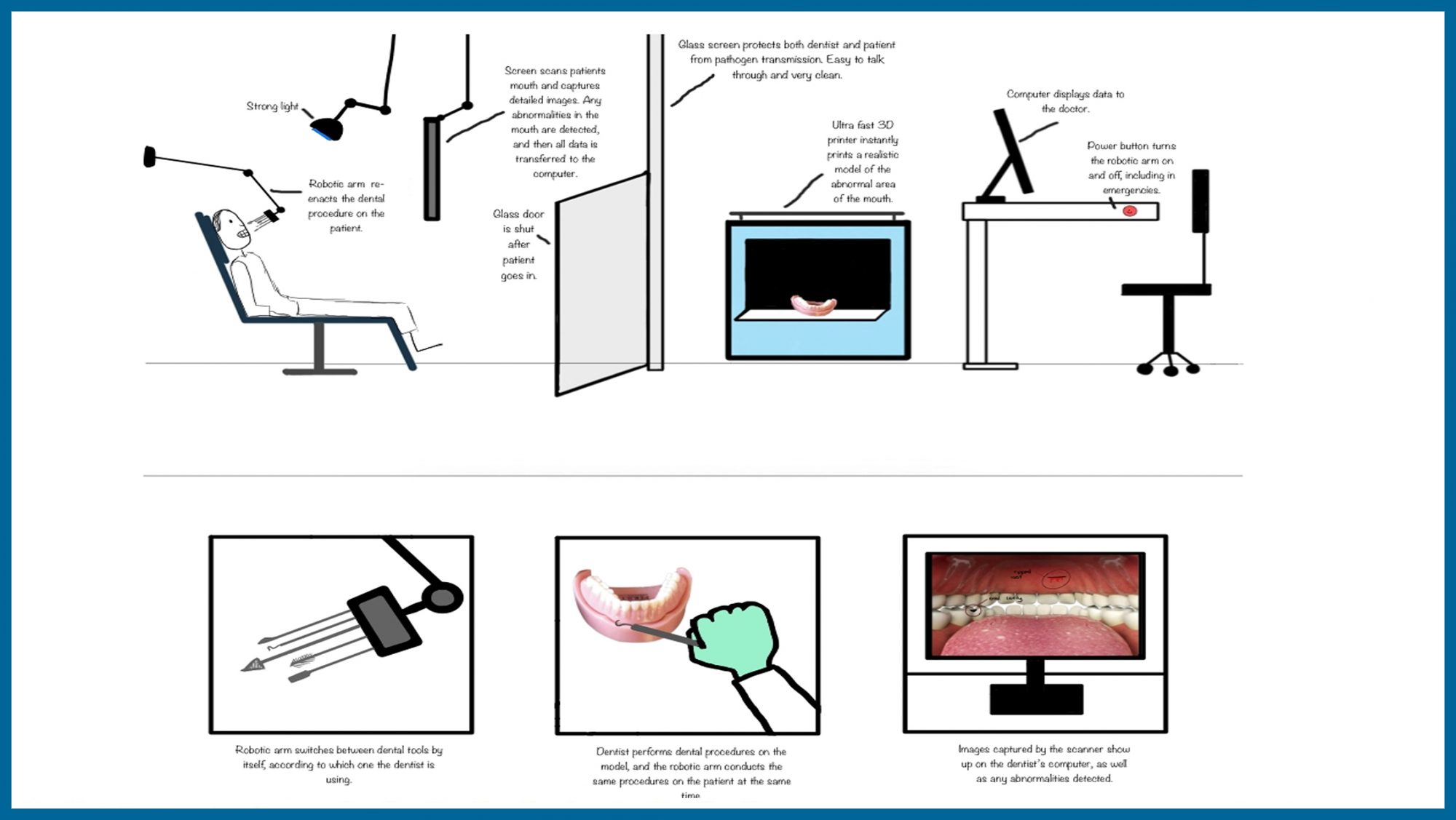From the Digital Technologies Coordinator
From the Digital Technologies Coordinator


Year 9’s innovate with artificial intelligence
Artificial intelligence (AI) in simplistic terms, is an attempt to make a computer, a robot or other piece of technology ‘think’ and do some things like humans. So how do we get a machine to think like a human? Firstly, the machine needs to be able to collect some form of data, this data goes into the AI (the container) and then some sort of decision is made, or an outcome is created.
Students investigated diverse ways data might be collected, the tools to achieve this and what are some of the possible outcomes. Then they chose a real-world problem and developed an AI concept which could potentially be used to solve the problem to make a positive difference.
Rose Hurley was concerned about anxiety, especially in teens as it can become overwhelming and interfere with daily life in many ways. Her concept was based on the concept of a fidget cube, a tool designed to relieve stress and anxiety. However, she integrated AI to collect data from touch and temperature sensors when the user fidgets with it. The data is then analysed and results displayed in mobile phone application for the user, giving recommendations based on the data acquired. The most important API used is the anomaly detector which recognises anomalies in the usual patterns of use.
Mahi Solanki was concerned about the consuming wait for blood test results, the expense for injections and the possibility of accessibility impacting the older community as travelling to blood testing locations can be difficult. She developed the concept called Hemotra, an AI smart, non-invasive smart watch which scans the users blood using infra-red light to identify anomalies in blood, suggest supplement needed, suggest follow up consults with medical professionals and will tack the user’s blood health.
Cyber security, which can be defined as the efforts we take to stop criminals stealing things from us through our computers is a very big deal, as it is one of the fastest growing industries in the world. This is because in the past, many homes only had one computer in them, now your phone is a computer, your oven and fridge might be computers too. Everything that is a computer, that is connected to the internet, can be hacked. Students had to consider if criminals be able to hack into their AI.
Daina Iasiello identified possible threats to her solution which included smishing, keyloggers and vishing. To prevent smishing she integrated a 10 digital lock code and facial recognition. Every thirty days, the user would be asked to log in again which involves a code being sent to their phone and then validating the code before logging in. To prevent keyloggers her device would have automated updates which would occur when the device is not in use and an anomaly detector to identify any abnormal use.
Ms Joanne Villis
Digital Technologies Coordinator
Above: Panic Watch by Yana Siahamis
Above: Smarter dentistry concept by Mahum Khattak to reduce the risk of pathogen transmission when conducting dental procedures











